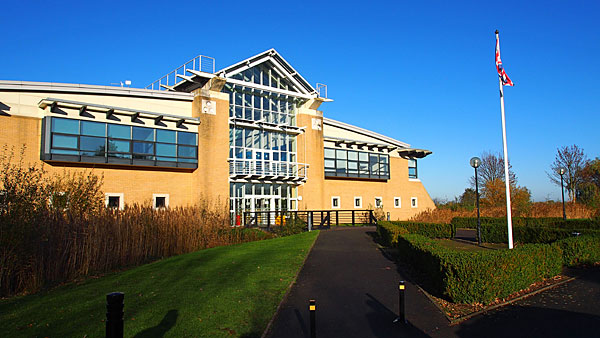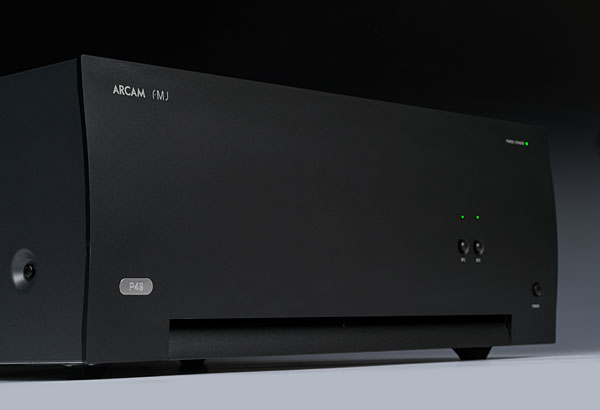| Columns Retired Columns & Blogs |
A look inside reveals sparseness I expected for $5000 US a little more meat this is something right out of an Outlaw Audio catalogue
The same thing was true with classical recordings. For some reason, I've been listening to a lot of Rachmaninoff this past summer; Stereophile's founder, the late J. Gordon Holt, used to dismiss the Russian as a composer of "palms-in-the-eye-sockets schmaltz," (footnote 1), but I find addictive his combinations of glorious melodies and equally glorious orchestrations. Using the Tidal streaming service, I've been exploring alternative recordings of Rachmaninoff works I already have in my collection. For a while my favorite Piano Concerto 2 has been George Vakhnadze's, with Jansug Kakhidze conducting the Tbilisi Symphony Orchestra (ALAC files ripped from CD, Sony Classical Infinity Digital 62294), though the relatively closely miked piano has recently led me to prefer Dejan Lazic's more naturally miked instrument, with Kirill Petrenko conducting the London Philharmonic (DSD64 from SACD, Channel Classics CCS SA26308). But as I write this review, I'm listening to Piano Concerto 2 played by Leif Ove Andsnes, with Antonio Pappano conducting the Berlin Philharmonic (lossless FLAC, Tidal/EMI 474813-2), and it has me under a spell. With the PS Audio DAC driving the Arcam directly and KEF's extraordinary little LS50 loudspeakers doing the honors, this was great music-making in great sound.

One of my torture tracks for an amplifier's bass reproduction is James Blake's cover of "Limit to Your Love," from the 2011 dub-step CD of that title (Atlas/A&M), which has Blake's idiosyncratic vocal and stabbing piano chords underpinned by subbass synth grumblings. With the Arcam driving the GamuT RS7 speakers, which have extended low bass, this track demonstrated the P49's excellent control—especially near the start, when two closely spaced bass tones produce massive beating.
As the P49 has a class-G output stage, I monitored its output voltage during one of my listening sessions using the YGA speakers. At my usual listening levels, with Steely Dan's Gaucho (24/96 ALAC files transcoded from FLAC, MCA B0000868-36/HDtracks) peaking at 90dB (Studio Six iPhone app, Fast, C-weighted reading), the RMS level never exceeded 7V, meaning that only transient waveform peaks were activating the voltage-rail lifters. The P49 behaved like a high-performance 50W/17dBW amp with 6dBW of dynamic headroom.
Comparisons
For the past couple of years I've been living on a diet of ultra-expensive amplifiers that has included the Ayre Acoustics MX-R Twenty, Bel Canto Black, Bricasti M28, Lamm M1.2 Reference, and MBL Corona C15—all monoblocks costing at least $20,000/pair. But Stereophile still had in storage our original review samples of the Pass Labs XA60.5 monoblocks, which I reviewed in January 2014, and the Parasound Halo JC 1 monoblocks, which Michael Fremer favorably reviewed in February 2003. At $11,000/pair and $9000/pair, respectively, the Nelson Pass-designed Pass Labs amps and the John Curl-designed Parasounds are closer in price to the John Dawson–designed FMJ P49, and almost identically priced when the P49 is used as a pair in biamped or bridged-mono mode.
The Pass Labs amplifiers sounded as I described in my review: a somewhat softened bass, but a magic midrange and sweet, detailed highs. Switching to the Arcam in stereo, with levels matched, revealed a similar sound at low frequencies, though with a somewhat softer-sounding treble region. This was an improvement with recordings whose high frequencies were a little hot, such as the DSD64 transfer of Ella Fitzgerald and Louis Armstrong's 1956 album Ella & Louis (Verve/Acoustic Sounds), in which Armstrong's solo trumpet at the start of "Tenderly" is balanced on the shrill side. But the Arcam's midrange still managed to pay homage to Ella's voice—what a superb instrument she had—with the images on this mono recording firmly locked in place between the speakers.
Through the P49, with a modern stereo recording—"Baby, Now That I've Found You," from Alison Krauss + Union Station's Live (DSD64 ripped from Rounder SACD)—the images were set farther behind the speakers than they'd been with the Pass Labs monos, but with perhaps not quite the same soundstage depth. This was with the Arcam used as a stereo amplifier; as I had two samples, I set up each to drive the YGA Carmel speakers in biamped mode—ie, one channel of each amp driving the tweeter and the other the woofer. The soundstage remained behind the speakers, but the depth did increase slightly, almost to the extent I experienced with the Pass Labs monos.
I set up the Parasound Halo amplifiers in the system while I was auditioning contenders for this issue's "Recording of the Month," the live Hommage à Eberhard Weber (CD, ECM 2463) taking the honors. I hadn't heard the Halo JC 1s for a long time, but listening to this CD reminded me that I'd agreed with Michael Fremer's verdict: the JC 1 was "lightning-fast, delivering transients and sibilants with a speed and clarity that were positively addictive," and a "bottom end [that] was equally impressive and subtly drawn." Although Mikey had concluded that "perhaps some listeners will find the JC 1 too refined and perhaps a tad polite," the Parasounds were not too polite with the YGA speakers. Their sound was, if anything, a touch too vigorous—though I'd matched levels, the JC 1s sounded a little louder than the Arcam in normal stereo mode—which I resolved by switching to the somewhat mellow KEF LS50s. With this magnificently reverberant album, the Parasounds threw a slightly deeper soundstage through the KEFs.

With Rachmaninoff's Piano Concerto 2, Dejan Lazic's piano sounded slightly more incisive than it had with the Arcam; and the subbass grumblings in James Blake's "Limit to Your Love" sounded more subterranean with the Parasounds, with a slightly better sense of pitch definition than the Arcam or the Pass Labs. Using the Arcam as a pair of monoblocks in biamped mode brought their low-frequency performance closer to that of the Halo JC 1s, but the Parasounds still had a slight edge in this regard.
Conclusion
"Arcam's P49 power amplifier represents the pinnacle of Arcam's audio engineering," states Arcam's press release. "We set out to incorporate everything we have learnt in almost 40 years to deliver a power amplifier that will set new standards and provide class leading sound quality for the best possible reproduction of your music."
That's a big promise for a dollar under $5000. But while some other amplifiers sound better in one or more aspects, the FMJ P49 sits at that sweet spot defined by the Law of Diminishing Returns: to get more performance, customers will have to dig a lot deeper into their pockets. Highly recommended.

A look inside reveals sparseness I expected for $5000 US a little more meat this is something right out of an Outlaw Audio catalogue

Just bought this unit. For 3400 pounds you would think Arcam would be able to put some nice proper black screws on the unit. Some on my unit are discoloured and other are scratched up. Who know how the unit looks inside?